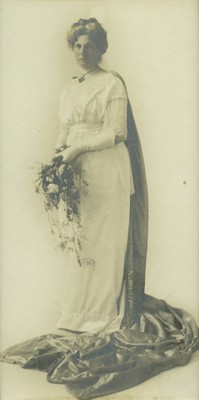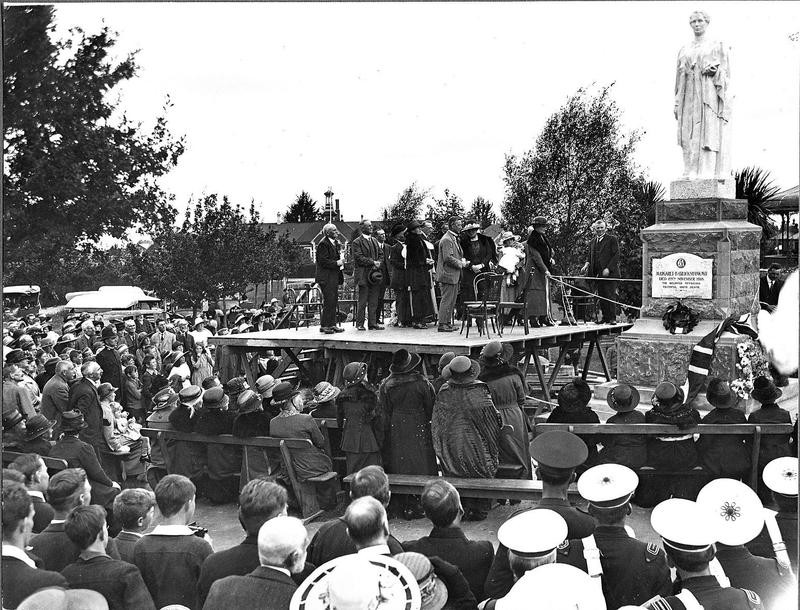In the 1890s, New Zealand schools made progress towards equality by allowing young New Zealand women to have access to scientific areas of study. This, in itself, led to the rise in interest and further academic study in the sciences. Waimate Museum and Archives has shared their story of a much adored, inspirational woman to come out of the first wave to enter the realm of medicine.*
Margaret Cruickshank came from a family of hardships. With her mother’s passing in her early life, Margaret and her twin sister Christina were left to look after their five younger siblings. One twin would stay at home to look after everyone while the other would attend classes that day and would come home to tell the other what things they had learned, alternating roles between each other.

She blossomed within her school life, becoming joint dux alongside her sister. Supported by her family and the teachers from Otago Girls’, Margaret entered into medical studies at Otago University; a year after fellow Otago Girl’s student, Emily Siedeberg. Margaret graduated with official registration as a practitioner in 1897 and then settled in the town of Waimate under the guidance of Dr. H. C. Barclay.
After taking a year to pursue postgraduate education in the United Kingdom, she remained in Waimate for her entire life. During the First World War, Dr. Barclay was shipped off to help with relief efforts. In his absence, Margaret acted as the head of the Waimate practice and one of three doctors acting as the Hospital’s Superintendent.
During 1918 and at the very end of New Zealand’s involvement in the war, the country succumbed to a severe Influenza A pandemic. The virus was thought to have traveled with those coming back from service in the war. It became the worst pandemic that New Zealand has ever faced, with the death toll thought to be around 9000. Amongst the many civilian deaths, the disease claimed the lives of 14 doctors throughout the country, including Margaret. She died at the age of 45.

What Margaret left behind was a legacy. In her honor, the community of Waimate erected a memorial statue to remember her tireless efforts to support those around her and the responsibilities of her district, regardless of her own health. As well as becoming a tribute to those who lost their lives during the pandemic, the inscription on the statue reads, ‘The Beloved Physician/Faithful unto Death’,serving as proof of the butterfly effect she had on the community of Waimate.
References:
NZ Herald. New Zealand’s first registered woman doctor was involved in illegal abortion trade. (2018) Retrieved from: https://www.nzherald.co.nz/nz/news/article.cfm?c_id=1&objectid=12073839
NZ History (Ministry of Culture and Heritage). The 1918 flu pandemic. (Updated 26-Jan-2018) Retrieved from: URL: https://nzhistory.govt.nz/culture/influenza-pandemic-1918
NZ Journal of History (NZJH). A Subtle Containment: Women in New Zealand Medicine, 1893-1941. (1988) Retrieved from: http://www.nzjh.auckland.ac.nz/docs/1988/NZJH_22_1_04.pdf
Te Ara: The Encyclopedia of New Zealand. Cruickshank, Margaret Barnet. (2016) Retrieved from: https://teara.govt.nz/en/biographies/3c41/cruickshank-margaret-barnet
University of Otago. A Statue of Merit: Dr. Margaret Cruickshank and the 1918 influenza pandemic. (2017) Retrieved from: https://blogs.otago.ac.nz/pubhealthexpert/2017/09/11/a-statue-of-merit-dr-margaret-cruickshank-and-the-1918-influenza-pandemic/
* I say ‘wave’, as I am hesitant to name Margaret Cruickshank as the second female registered doctor, first registered G.P. to practice in New Zealand. This is because of Eliza Frikart, technically an advertising registered doctor in 1893 though her licenses were stripped in the late 1890s due to ‘illegal abortifacient’ activities and covering for a man who claimed to be a doctor, but was not qualified. Whether it was due to this, or her claiming her degree overseas and gaining licenses back through Australia and New Zealand, I am not sure. Though, after Margaret and Emily Siedeberg’s acceptance to Otago, there was an increase in applications from young women, so the term ‘wave’ is appropriate.
